What do oranges, figs, coffee, stevia and lemongrass have in common? They're all growing in a greenhouse in Nebraska. In 2018, the North Platte Natural Resources District (NPNRD) in Scottsbluff built a geothermal greenhouse as part of its outdoor educational facility. The 138’x17’ greenhouse features 70 plots of native and introduced grasses, a learning/classroom area, tree identification plantings and a perimeter of pollinators.
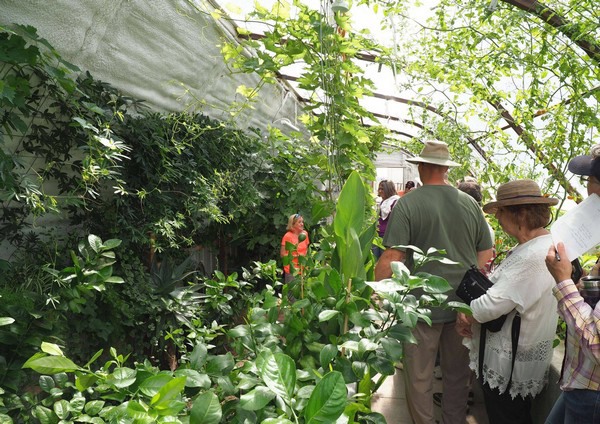
Geothermal energy is dispersed in the winter through 26 underground drainage tiles, 250 ft. in length, buried to a depth of eight feet, explains Jenifer Berge Sauter, Special Projects Coordinator/Greenhouse with NPNRD. This is installed in a loop with exits on the east and west ends of the 86 ft. middle growing area. "As night time temperatures plummet a blower sends cold air underground to warm to 52℉ on the west and it is dispersed on the east. This greenhouse is also built in a walipini style which also helps retain heat and hold humidity", Jenifer tells us. "A solar array has been installed with 12 microinverters to help with electricity needs-mainly fans and blowers. We use thermostats and temperature sensors for monitoring conditions and a flow meter to measure water use. Our goal is for a low energy/resource use greenhouse with high quality production. There is an educational area for students, volunteers and our community to learn planting, care and alternative farming techniques and crops."
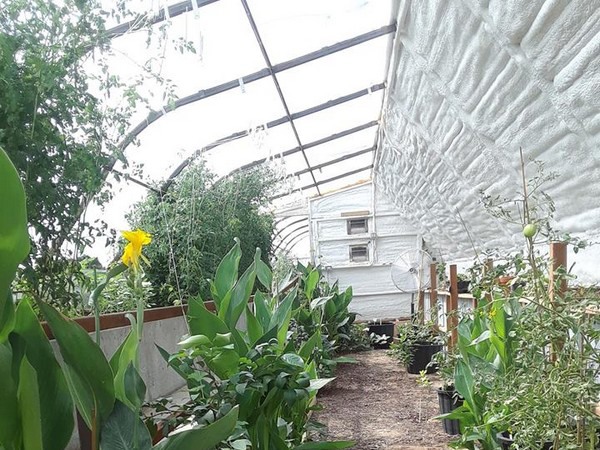
Praying mantis
Like many greenhouses nowadays, the NPNRD greenhouse makes use of biological crop protection. "We use beneficial insects including ladybird beetles and Encarsia formosa for pest control ordered from Arbico Organics", Jenifer says. And in a greenhouse with unusual crops, it comes as no surprise that there are also unusual predators: "We also have native praying mantis, spiders and other predators that are excellent. Pollinators are all native and include mason bees, bumble bees and wasps."
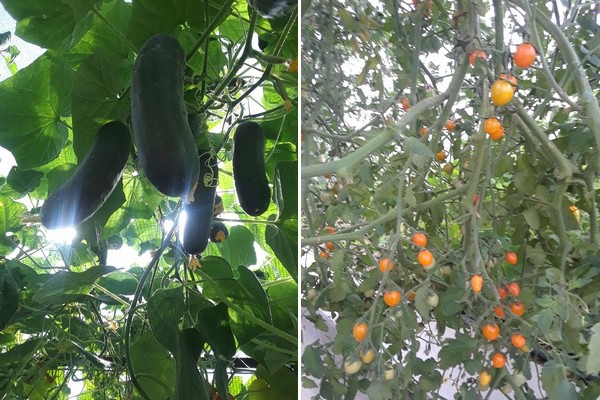
From orange to saffron
As already mentioned, the NPNRD greenhouse isn't your standard monoculture greenhouse. Many different plants are grown there, including orange, tangerine, avocado, fig, lemon, coffee, lime, grape, passion fruit, dragon fruit, banana, tomato, cucumber, pepper, kale, pea, bean, spinach, lettuce, carrot, radish, kohlrabi, stevia, basil, lemongrass, saffron, many ornamental flowers and plants and more. The produce grown is donated to local food pantries and a veterans home.
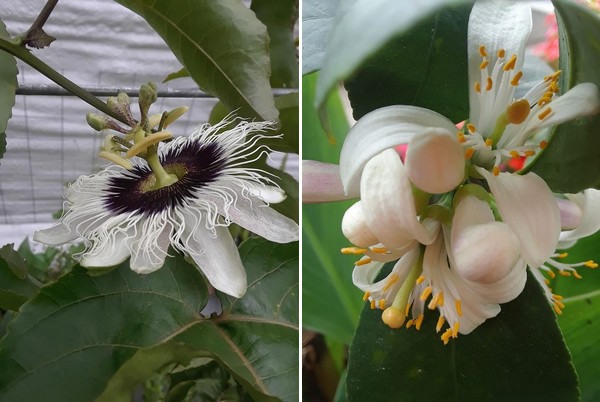
Some of the more unusual varieties, Jenifer says, are Kiwano melon, passion fruit and Ponderosa lemon. "This year we will add Thai basil, and some small 2 lb melon varieties such as Charentais and Golden Jenny." In the future, she would like to try to grow vanilla, as other orchids have grown well in the greenhouse.
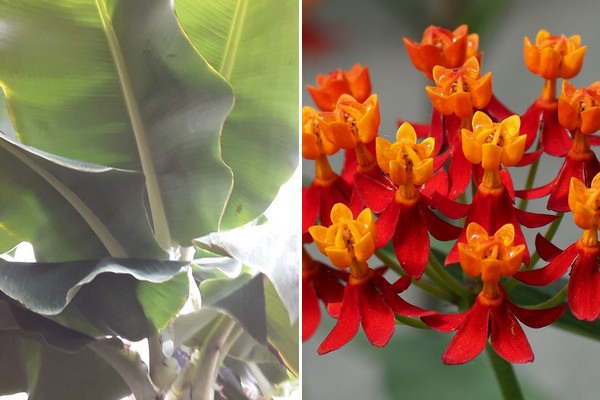
If you want to stay up to date on all the interesting crops growing in the NPNRD greenhouse, be sure to follow the project's Facebook page.
For more information: North Platte NRD
North Platte NRD
Jenifer Berge Sauter
100547 Airport RD
Scottsbluff, Ne
(308) 632-2749
jberge-sauter@npnrd.org
www.npnrd.org
